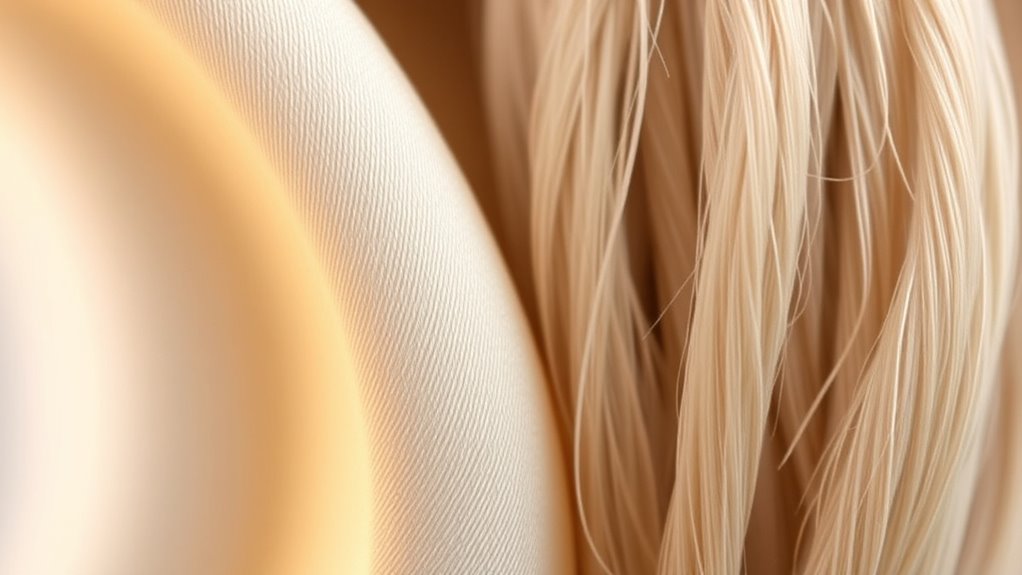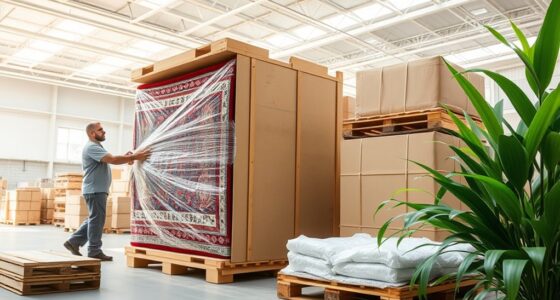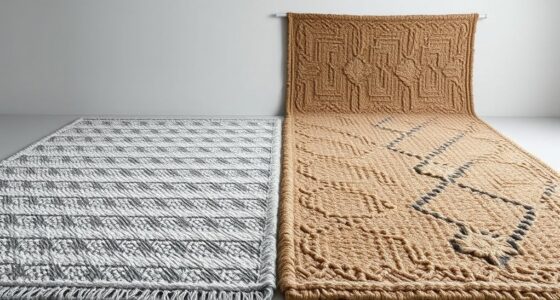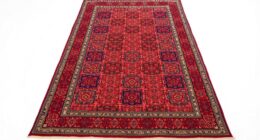When choosing between peace silk and conventional silk, consider the production methods and ethical impacts. Conventional silk involves boiling cocoons, which kills silkworms, raising animal welfare concerns. Peace silk allows silkworms to complete their lifecycle naturally, making it a more humane option. Environmentally, peace silk generally has a lower footprint, using fewer resources and chemicals. To understand the full picture and make the most ethical choice, keep exploring these differences.
Key Takeaways
- Peace silk allows silkworms to complete their lifecycle, avoiding killing, unlike conventional silk which involves boiling cocoons.
- Conventional silk production consumes more water, energy, and chemicals, leading to higher environmental impact compared to peace silk.
- Peace silk is more ethical, aligning with animal welfare by not killing silkworms, while traditional silk sacrifices silkworms for fiber.
- Conventional silk often has lower production costs and higher yields, whereas peace silk faces challenges like slower processing and higher costs.
- Consumers seeking ethical options should look for transparency and certification to ensure peace silk’s humane and sustainable practices.
Understanding the Production Processes of Traditional and Peace Silk
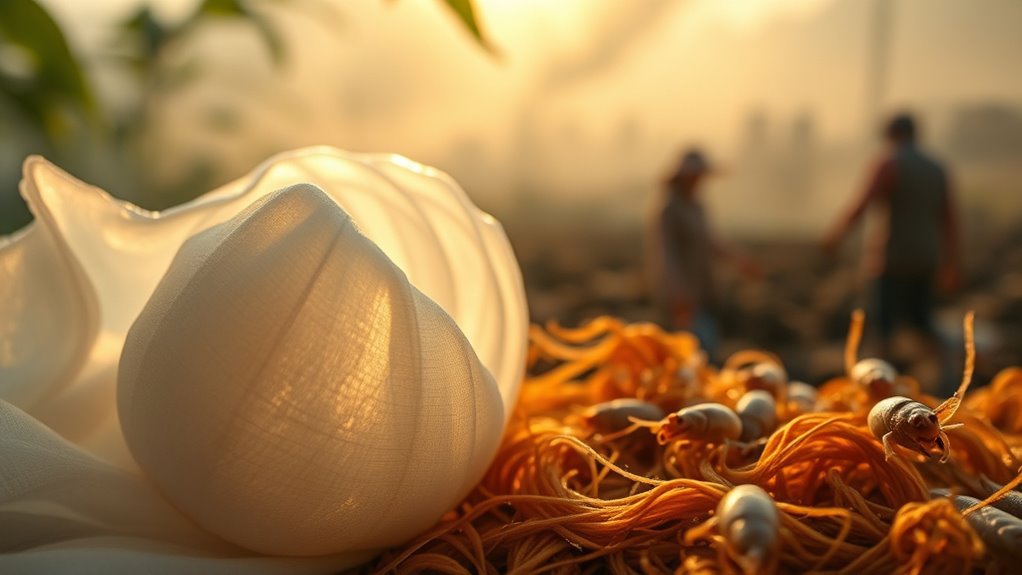
Have you ever wondered how traditional silk is made compared to peace silk? In traditional silk production, silk harvesting begins with boiling the cocoons to soften the sericin, allowing the silkworms to be killed before they emerge. The cocoon processing involves carefully unwinding the long silk fibers, which are then spun into threads for weaving. This method often results in the death of the silkworms. In contrast, peace silk avoids killing the silkworms. Instead, the cocoons are harvested after the moth naturally emerges, and the cocoon processing is done without boiling. This approach preserves the life of the silkworms, making the process more ethical. Additionally, Vetted silk options like peace silk are gaining popularity for their ethical and sustainable qualities. Understanding these differences highlights the contrast between conventional and peace silk production methods.
Ethical Considerations Behind Silk Choices
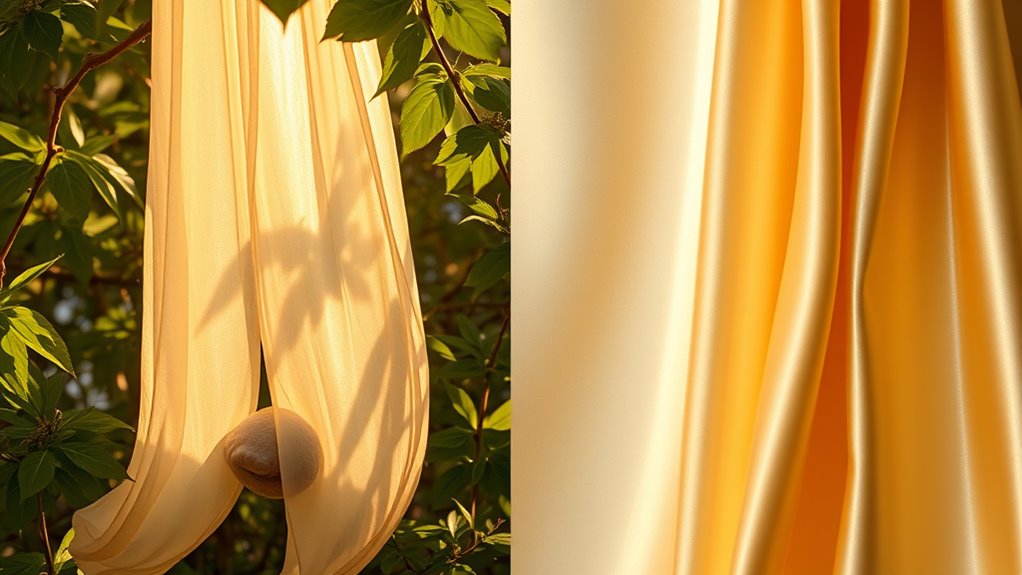
Choosing between traditional and peace silk involves important ethical considerations that can influence your purchasing decisions. Traditional silk has deep cultural significance in many societies, symbolizing status, tradition, and craftsmanship. However, its production often involves the killing of silkworms, raising ethical concerns about animal welfare. Peace silk, on the other hand, aligns with ethical values by allowing silkworms to complete their natural lifecycle, avoiding harm. These choices also carry economic implications; traditional silk supports established industries, while peace silk may foster more sustainable, humane practices. Your decision reflects your values—whether you prioritize cultural heritage or animal rights. By understanding these ethical considerations, you can make more informed, conscientious choices that align with your beliefs about compassion and cultural preservation. Additionally, awareness of animal welfare concerns can guide consumers toward more humane options in their textile choices.
Environmental Impact of Conventional and Peace Silk
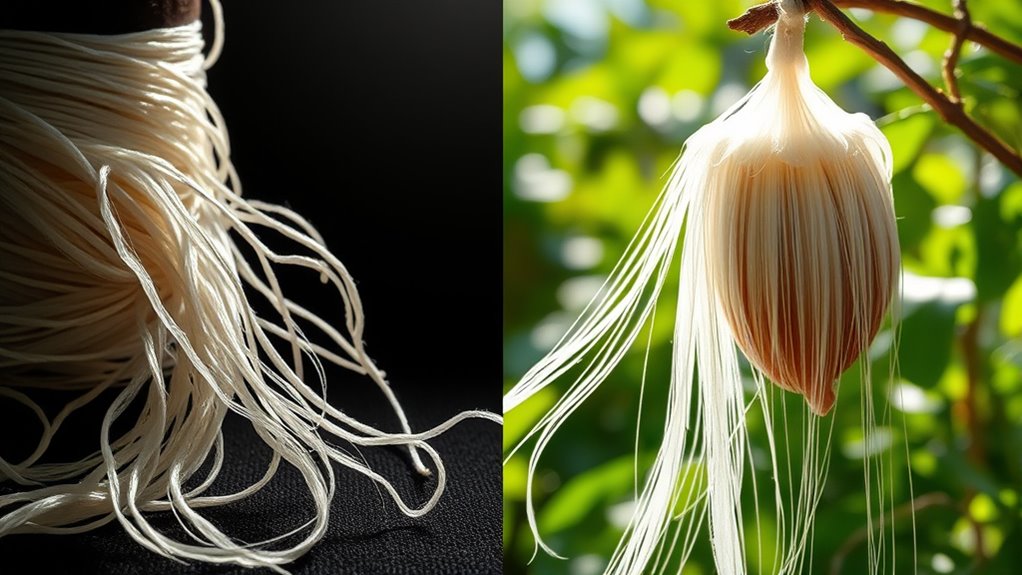
The environmental footprint of silk production varies markedly between traditional and peace silk methods. Conventional silk farming involves intensive resource consumption, including large amounts of water and energy, and often leads to environmental pollution from chemical dyes and pesticides. In contrast, peace silk production typically has a lower environmental impact because it avoids killing silkworms, reducing waste and resource use. Additionally, peace silk supports sustainable manufacturing practices, which aim to minimize ecological damage throughout the production process. Both methods still impact ecosystems, but peace silk tends to be more sustainable overall.
Benefits and Challenges of Peace Silk
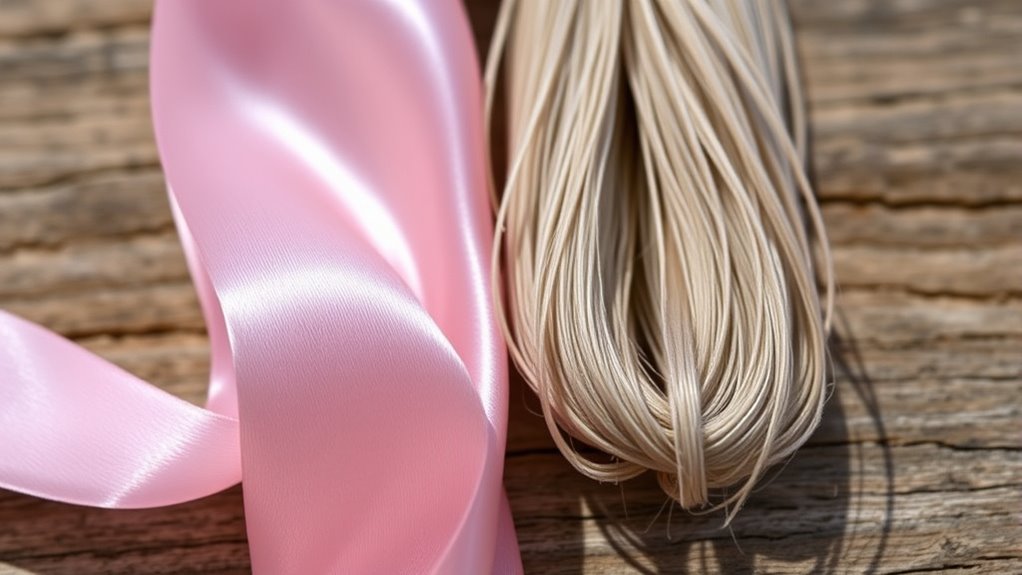
Peace silk offers notable benefits, particularly in its ethical approach to silk production. It respects animal rights by allowing silkworms to complete their natural lifecycle without killing them during silk farming. This method reduces ethical concerns associated with conventional silk. However, challenges exist, such as lower yield and higher costs. Peace silk production requires more time and careful management, which can limit scalability. Additionally, the quality of peace silk may vary, impacting consumer acceptance. Here’s a quick comparison:
| Aspect | Conventional Silk | Peace Silk |
|---|---|---|
| Animal Rights | Kills silkworms | Preserves silkworms’ lives |
| Production Time | Faster | Slower |
| Cost | Lower | Higher |
| Environmental Impact | Moderate | Lower |
| Yield | Higher | Lower |
Furthermore, the sustainable practices involved in peace silk help minimize environmental impact and promote ethical sourcing.
Making Informed Decisions: Choosing Ethical Silk
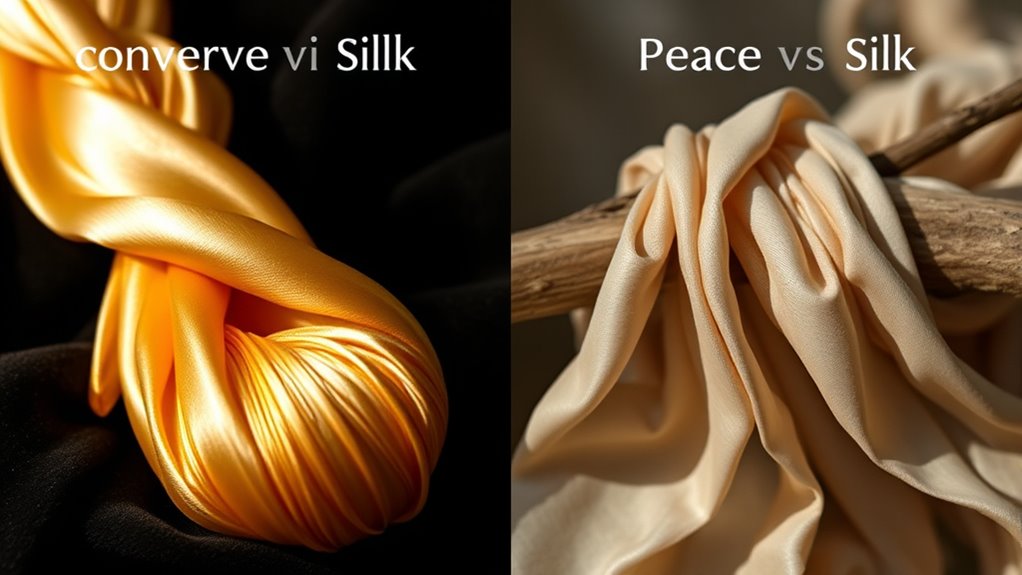
Making informed decisions about silk involves understanding the ethical implications behind different production methods. When choosing silk, consider the impact of silk farming and the ethical dilemmas it presents. Conventional silk production often involves boiling silkworms alive, raising moral concerns. Peace silk, however, allows silkworms to mature naturally, avoiding harm. To make a conscious choice, reflect on these factors:
- The environmental footprint of silk farming practices
- The treatment of silkworms during production
- The social implications for workers involved in silk manufacturing
- The transparency and certification of ethical standards
- Understanding the Law of Attraction can help align your values with your purchasing decisions.
Frequently Asked Questions
How Does the Cost of Peace Silk Compare to Conventional Silk?
You’ll find that the pricing comparison between peace silk and conventional silk shows peace silk tends to be more expensive. This is because production costs for peace silk are higher due to more ethical practices, such as not boiling silkworms alive. While conventional silk benefits from established, large-scale production, the more sustainable and humane methods used in peace silk drive up costs, making it less affordable but more ethical.
Are There Certifications That Verify Silk’S Ethical Sourcing?
Think of certifications as a guiding star for your ethical journey. Yes, there are certification standards and ethical labels like GOTS, Fair Trade, and OEKO-TEX that verify silk’s ethical sourcing. These labels act as a trustworthy map, ensuring your silk comes from responsible sources. By choosing certified silk, you support sustainable practices and protect both silkworms and workers, turning your purchase into a conscious act.
What Are Consumer Options for Identifying Peace Silk Products?
You can spot peace silk products by looking for eco labels and ethical markers on packaging. These certifications indicate the silk was produced without harming silkworms, aligning with cruelty-free practices. Some brands also openly share their sourcing methods online, helping you make informed choices. By paying attention to these indicators, you guarantee your purchase supports sustainable and ethical silk production, aligning with your values for animal welfare and environmental responsibility.
Can Peace Silk Be Produced at Scale for Mass Markets?
You might think scaling peace silk for mass markets is a tall order, but it’s not impossible. While there are scaling challenges like maintaining ethical standards and ensuring market acceptance, innovations in sustainable farming and processing help bridge the gap. As demand for ethically produced products grows, the industry is gradually catching up. With persistence, peace silk can become a viable option for larger markets, proving that good things do come to those who wait.
How Does the Texture and Quality of Peace Silk Differ From Traditional Silk?
You’ll notice that peace silk has a softer, more natural fiber feel compared to traditional silk, which can be smoother and more lustrous. The sheen difference is subtle; peace silk often has a matte finish, giving it a more organic appearance. While the overall quality is comparable, peace silk offers a more eco-friendly alternative with a slightly more textured feel, appealing to those seeking sustainable luxury.
Conclusion
As you weave your choices into the fabric of ethics, remember that every thread tells a story. Choosing peace silk is like planting seeds of compassion, nurturing a more mindful world. Your decision can turn the silent cry of cocoons into a chorus of kindness, sparking change one garment at a time. So, let your conscience be the loom guiding you toward a future where beauty and ethics intertwine seamlessly.
